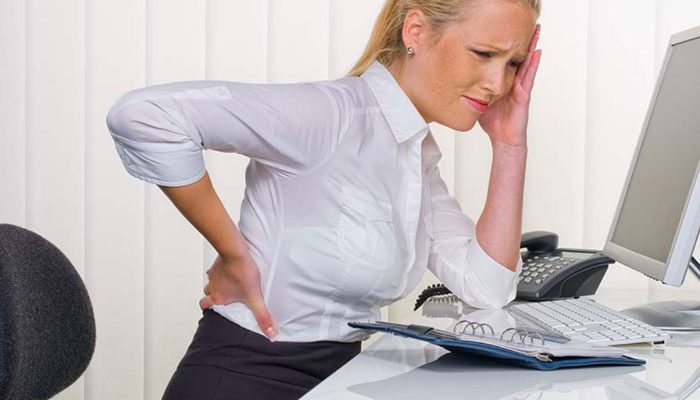hile many people do not reflect on the complex role of the lower back (lumbar spine) until they begin experiencing issues, the lower back does indeed provide significant support to the human body. It supports the weight of the upper body and it enables everyday movements such as bending, lifting, and twisting. To gain further appreciation for this part of the spine, it is important to realize that the lower back is an amazing structure! It is here that bones, muscles, joints, nerves, and ligaments all interconnect and work together to properly function in its vital role. On the flip side, due to it being so incredibly complex, the lumbar spine is also very susceptible to injury and to causing pain.What Are The Symptoms?
The degree of pain experienced varies drastically from one individual to another. Low back pain can range from mild, annoying pain to more persistent, severe, or even debilitating pain. Also, some lower back pain is classified as acute “temporary” while other back pain is chronic, meaning a long-term condition that must be continually managed. Generally speaking, chronic lower back pain lasts for longer than 90 days and often times worsens. Symptoms of lower back pain include general discomfort and pain that is nagging, aching, or creates a stabbing or burning sensation. Pain can be in a well-defined but that is not always the case. It is also common that lumbar pain extends into the thighs, hips, and buttocks.
How Does One Get Low Back Pain?
Determining the cause of low back pain can be very tricky. Most commonly, lower back pain is not the result of any single cause but a combination of causes. Determining the cause or causes is essential, as this determination will sometimes allow a patient to simply make lifestyle changes that can prevent further damage and pain from occuring. Typical causes of lower back pain include (but are not limited to) the following: obesity, infection, weakened lower back muscles, sprains or strains, fractures, degeneration, tumors, muscle spasms, muscular tension, ligament or muscle tears, overuse due to strenuous/repetitive activities such as contact sports and weight lifting, herniated discs, smoking, vibrations (such as those experienced in a vehicle) over a long period of time, spinal stenosis, osteoarthritis, and/or spondylitis.
Getting Diagnosed
Tests for diagnosing low back pain begin with gaining an understanding of one’s complete medical history and conducting a physical exam. After this careful analysis, other tests are generally ordered. These tests often times include an X-Ray, CT Scan, MRI, Electromyogram (EMG), or even a Bone Scan.
Treatment Options
Fortunately, there are numerous ways to treat, manage, and resolve lower back pain. The exact treatment will of course vary from patient to patient and will be dependent on numerous factors. Treatment could be as simple and conservative as making lifestyle modifications and taking medication to regularly receiving physical therapy or getting surgery. Typical lifestyle modifications that are recommended include weight loss, quitting smoking, and making changes to physical activity. In some cases, chiropractic manipulation or assistive devices may also be recommended.
“If you are experiencing any type of spine-related pain, including lower back pain, it is essential that you consult with a Spine Specialist here at the Stridewell Same-Day Spine Clinic. Failing to obtain timely treatment by qualified medical professionals can drastically worsen your condition. What sets our providers apart is that they specialize exclusively in the spine and provide a same-day diagnosis and customized treatment plan. Therefore, please do not delay. Come in to consult with us as a walk-in or give us a call for an appointment. New patients are always welcome, and we provide care for a reasonable flat fee – no insurance headaches! Stridewell Tips
read article


